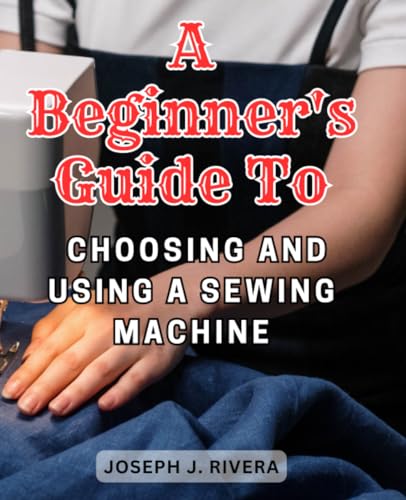Creating beautiful and precise bias tape has never been easier. With a bias tape maker, you can effortlessly craft custom strips that perfectly complement your sewing projects. Whether you’re a seasoned seamstress or just starting out, this handy tool simplifies the process, saving you time and ensuring professional results.
Imagine adding flawless piping, binding, or decorative accents to your garments and home décor with minimal effort. A bias tape maker not only enhances the appearance of your creations but also boosts your confidence in tackling more intricate designs. Let’s dive into how you can make the most of this essential sewing accessory and elevate your craftsmanship.
Choosing the Right Bias Tape Maker
Selecting the right bias tape maker enhances your sewing projects’ precision and efficiency. Consider the following factors to make an informed choice.
Manual vs. Electric Models
Manual models require hand operation, offering control over tape width and speed. They are typically more affordable and portable, ideal for small projects or occasional use. Electric models, on the other hand, automate the cutting and folding process, increasing productivity and consistency. They suit high-volume tasks and professional settings, reducing manual effort and time.
Key Features to Look For
- Adjustable Width Settings
Enables customization of bias tape sizes for different projects.
- Material Compatibility
Supports various fabrics, including cotton, polyester, and blends.
- Durability and Build Quality
Ensures long-term use with sturdy construction and quality components.
- Ease of Use
Features intuitive controls and clear instructions for seamless operation.
- Safety Features
Includes guards and automatic shut-offs to prevent accidents.
- Maintenance and Cleaning
Offers easy access for cleaning and minimal maintenance requirements.
- Portability
Lightweight and compact designs allow for easy storage and transport.
- Cost and Warranty
Balances budget with reliability, backed by comprehensive warranty options.
| Feature | Manual Models | Electric Models |
|---|---|---|
| Operation | Hand-operated | Automated |
| Cost | Lower price point | Higher investment |
| Productivity | Suitable for small projects | Ideal for high-volume tasks |
| Portability | More portable | Typically less portable |
| Control over Process | Greater manual control | Consistent, automated results |
Choose a bias tape maker that aligns with your project needs and usage frequency to achieve the best results.
Setting Up Your Bias Tape Maker
Getting your bias tape maker ready ensures smooth and efficient tape production. Follow these steps to set up your machine correctly.

Assembly Instructions
- Unpack Components: Remove all parts from the box, including guides, rollers, and the main body.
- Attach Guides: Secure the side and top guides to the designated slots on the machine.
- Install Rollers: Place the rollers firmly into their respective positions to ensure even fabric feeding.
- Connect Power: Plug in the bias tape maker and ensure the power switch is in the off position.
- Calibrate Settings: Adjust the width and thickness settings according to your project requirements using the control knobs.
Preparing Your Fabric
- Cut Fabric Strips: Measure and cut fabric into strips, typically 2.5 inches wide, ensuring straight edges for uniform tape.
- Press Edges: Iron the fabric strips to create crisp edges, facilitating easier folding and sewing.
- Align Strips: Place the fabric strips evenly against the guides of the bias tape maker, avoiding wrinkles or overlaps.
- Select Material Type: Choose the appropriate material setting on your machine based on the fabric’s thickness and weave.
- Test a Sample: Run a test strip to verify alignment and adjust settings if necessary before processing the entire batch.
Creating Professional Bias Tape
Achieving polished bias tape enhances your sewing projects with professional flair. Follow these steps to ensure precision and quality every time.
Measuring and Cutting
Accurate measuring guarantees uniform bias tape. Begin by determining the desired width; common sizes range from 1/4 inch to 2 inches. Use a fabric ruler for precision. Align your fabric diagonally to the grain for true bias. Mark measurements with tailor’s chalk, ensuring straight lines. Cut strips consistently using sharp fabric scissors or a rotary cutter. For large quantities, consider using a cutting machine to maintain uniformity. Organize cut strips by width and fabric type to streamline the next steps.
Operating the Machine
Efficient machine operation produces smooth, even bias tape. Start by setting your bias tape maker to the chosen width; most models offer adjustable settings from 1/4 inch to 2 inches. Feed the fabric strips into the machine, ensuring they are aligned with the guides. Maintain a steady hand to prevent bunching or uneven feeding. Monitor the machine’s speed; slower settings enhance precision, while faster speeds increase productivity. Regularly check for consistent tension and adjust if necessary. When finished, carefully remove the bias tape and inspect for uniformity. Trim any uneven edges with scissors to achieve a flawless finish.
Tips and Tricks for Best Results
- Select Appropriate Fabric: Choose lightweight cotton or polyester blends to ensure smooth feeding through the bias tape maker.
- Adjust Width Settings: Set the machine to your desired tape width precisely, following the manufacturer’s guidelines for optimal configuration.
- Maintain Consistent Tension: Keep even tension to prevent stretching or puckering, adjusting based on the fabric type you’re using.
- Test on Sample Strips: Run sample strips before processing the entire batch to verify settings and make necessary adjustments.
- Keep the Machine Clean: Regularly remove lint and debris to maintain optimal performance and prevent jams.
- Use Sharp Blades: Replace blades periodically to ensure clean cuts, avoiding fraying or uneven edges in your bias tape.
- Secure Fabric Properly: Align and hold fabric strips firmly to avoid slippage during production, ensuring uniform tape width.
- Store Bias Tape Correctly: Roll finished bias tape tightly and store it in a dry environment to preserve quality and prevent wrinkles.
- Calibrate Regularly: Periodically check and adjust machine calibration to maintain accuracy and consistency in tape production.
- Refer to the Manual: Consult your bias tape maker’s user manual for specific maintenance tips and operational guidelines to enhance longevity and efficiency.
Maintenance and Troubleshooting
Proper maintenance ensures your bias tape maker operates efficiently and prolongs its lifespan. Follow these steps to keep your machine in optimal condition.
Regular Maintenance
- Clean After Each Use: Remove fabric scraps and dust using a soft brush or compressed air to prevent buildup.
- Lubricate Moving Parts: Apply a light machine oil to rollers and gears monthly to maintain smooth operation.
- Inspect and Replace Blades: Examine blades for wear every few months and replace them if they become dull or damaged.
- Check Tension Settings: Regularly verify tension adjustments to ensure consistent tape quality.
- Store Properly: Keep the machine covered and stored in a dry place to protect it from moisture and dust.
Common Issues and Solutions
| Issue | Possible Cause | Solution |
|---|---|---|
| Uneven Tape Width | Incorrect width settings | Adjust the width dial to the desired measurement. |
| Fabric Jams | Misaligned fabric strips | Realign fabric and ensure strips are fed evenly. |
| Poor Tape Quality | Inconsistent tension or dull blades | Reset tension settings and replace blades if necessary. |
| Machine Not Turning On | Power connection issues | Verify the power source and inspect cables for damage. |
| Sluggish Operation | Lack of lubrication or buildup | Clean the machine thoroughly and apply lubricant to moving parts. |
Troubleshooting Tips
- Tape Curling: Verify that fabric strips are pressed flat before processing. Adjust tension settings to prevent stretching.
- Inconsistent Folding: Ensure fabric strips are uniform in width and thickness. Check rollers for smooth rotation.
- Power Problems: Test the power outlet with another device. Inspect the machine’s power cord for frays or breaks.
- Overheating: Allow the machine to cool down between extended uses. Clean ventilation areas to ensure proper airflow.
Maintenance Schedule
| Task | Frequency |
|---|---|
| Cleaning | After each use |
| Lubrication | Monthly |
| Blade Inspection | Every 3 months |
| Tension Verification | Weekly |
| Comprehensive Check | Every 6 months |
Adhering to this maintenance and troubleshooting guide ensures your bias tape maker remains reliable and produces high-quality tape for all your sewing projects.
Conclusion
Using a bias tape maker can transform your sewing projects with ease and precision. You’ll add beautiful details and professional finishes that elevate your work. Whether you’re a beginner or an experienced sewer this tool is a valuable addition to your sewing kit.
Whether you’re enhancing garments or adding finishing touches to home décor your bias tape maker opens up a world of possibilities. Keep experimenting with different fabrics and techniques to unlock more creative ideas. As you gain confidence using this tool you’ll tackle more intricate projects and perfect your craftsmanship.
With regular use and proper maintenance your bias tape maker will remain a reliable partner in all your crafting adventures. Embrace the opportunities it brings and watch your projects reach new heights. Happy sewing!













